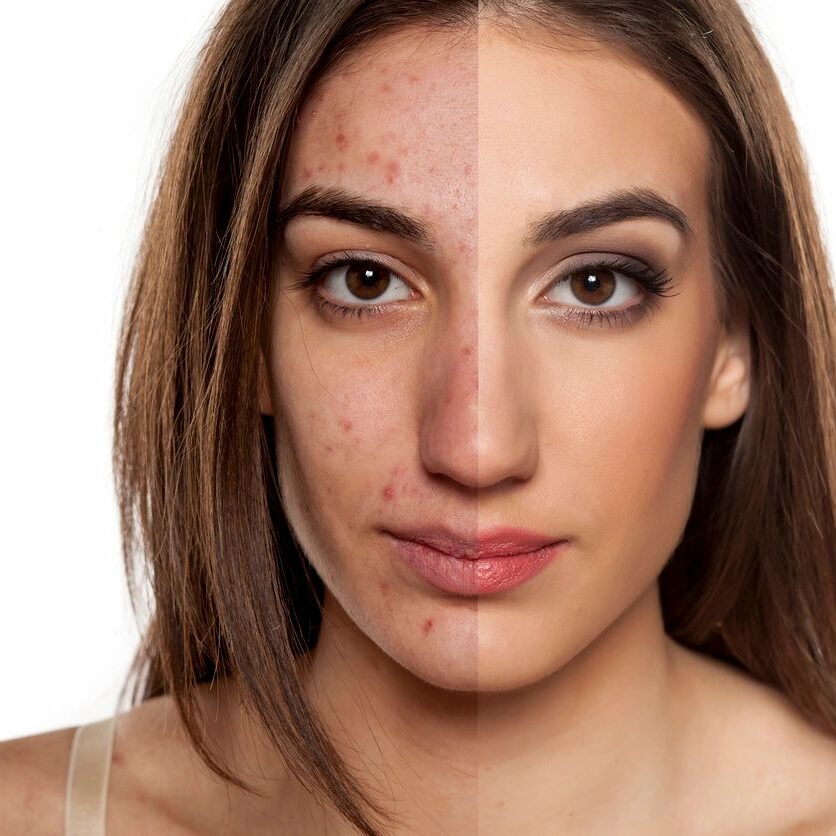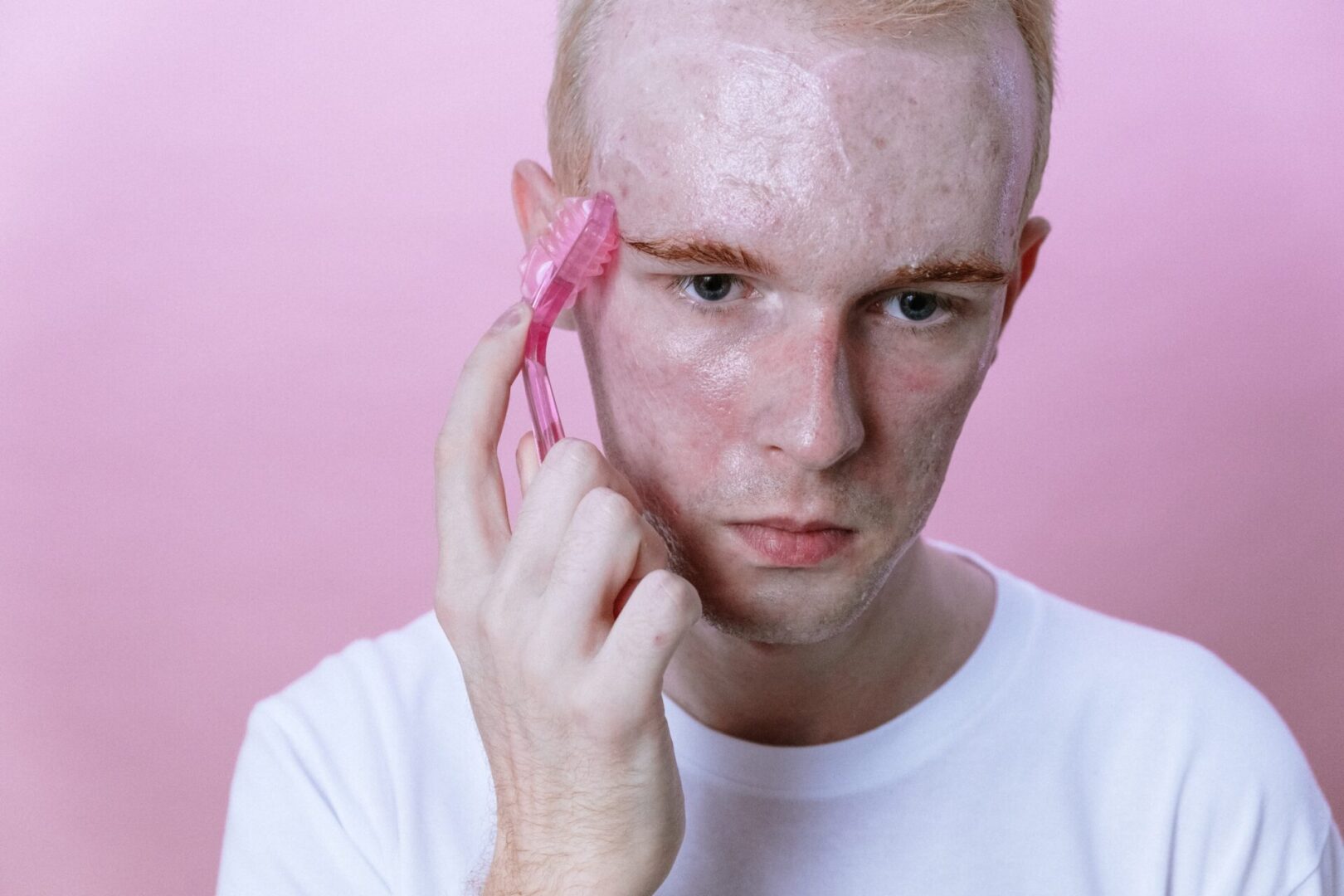Acne Scars
Types of Acne Scars
ICE-PICK SCARS
Typically deep pits that can occur anywhere on the face.
SHALLOW, DEPRESSED SCARS
Typically slightly depressed areas, which can often look like shallow chickenpox scars
DEEPER, DEPRESSED SCARS
Deeper depressions which occurs most commonly on the cheeks
For many patients, there is no one procedure that will accomplish all of one’s goals. Therefore, is often best to use a combined approach utilizing two or more different procedures to achieve an optimal result. Occasionally these procedures can be performed at the same time, although often these procedures are performed several weeks apart. Below is a list of commonly performed procedures, their limitations and benefits.

Treatment modalities commonly used for shallow, depressed scars
LASER-PEEL (CARBON DIOXIDE OR ERBIUM:YAG)
Unlike chemical peels which rely on acids to damage the skin, the laser-peel utilizes laser energy to precisely peel away layers of skin. This type of peel works best for depressed scars. Like the medium-depth chemical peel, recovery typically takes several weeks and redness can persist for months. Additionally, redness of the treated area may last for several months. The final result may not be fully appreciated for one year or longer. Fractional CO2 Laser Resurfacing is an improved version of the traditional ablative CO2 laser, and has faster healing than traditional ablative CO2 laser resurfacing.
DERMABRASION
With this modality, layers of skin are sanded away. In general, dermabrasion typically works best for shallow depressed scars, with only modest improvement, if any, on ice-pick scars. The recovery or dermabrasion typically is one or more weeks, although redness of the skin can persist for several months.
MICRONEEDLING WITH RADIOFREQUENCY (I.E. SECRET RF)
Electrical energy, radiofrequency, is used to tighten the skin. The tiny microneedles are used to deliver the energy. It is the radiofrequency that results in tightening of the skin and reduction of the scars. Results are often impressive, although multiple treatments are often needed.
RESTYLANE™ OR JUVEDERM™ INJECTIONS
This product is injected directly into the scar. There is little to no recovery in most cases. Unfortunately, results are not permanent, but often last six months or longer.
FRAXEL™ ERBIUM LASER
This laser ablates tiny spots of tissue. Unlike tradition Laser-peeling, several treatment sessions are needed and mild-moderate improvement can be achieved. The advantage of this modality over traditional Carbon Dioxide Laser-Peels is that healing is fast (days), but the results with a single treatment is not as good.
SUPERFICIAL CHEMICAL PEEL (GLYCOLIC ACID, SALICYLIC ACID PEELS, AND 15-20% TCA)
These superficial peels are often used to improve very mild acne and/or staining of the skin (dark spots). In general, these peels affect mainly the epidermis (the top layer of skin). Unfortunately, the superficial peels offer little improvement with acne scars, where the damage is in deeper layers of the skin–the dermis. In general, these peels offer little or no improvement of ice-pick scars, and minimal improvement of shallow depressed scars. One of the benefits of these superficial peels is that there is minimal recovery needed. Most patients will experience some peeling, redness, and/or flaking of the skin for up to week.
MICRONEEDLING
Tiny needles are rolled or inserted into the skin. This minor injury results in the release of proteins that result in slight improvement of scars. Multiple treatments are needed and results are often unimpressive.
MEDIUM-DEPTH CHEMICAL PEEL (70% GLYCOLIC ACID OR 35%+TCA PEELS)
These peels are often used to improve wrinkles or superficial scars, including acne scars. Depending upon the depth of peel achieved, recovery may be several days to several weeks or longer. This type of peel works best for shallow depressed scars, with minimal affect on ice-pick scars.
Treatment modalities commonly used for deeper, depressed scars
SUBCISION WITH DERMAL FILLER
For scars that are tethered (pulled down with scar tissue), the release of these tethers is paramount in order to get the skin to come back up. A special needle is used to cut the tethers and a dermal filler (Restylane™ or Juvederm™) is then placed to reduce the chance of the tethers reforming. The fillers are not permanent and may need to be replaced every 6-12 months.
RADIESSE™
This product is injected under the scar to create immediate elevation. Results last 6-18 months typically. Results are usually predictably good to excellent.
FAT TRANSPLANTATION
In this procedure, fat is taken from one area of the body (usually the hip) and mesh transplanted beneath the depressed scar to elevate it. Occasionally, multiple procedures may be necessary to achieve optimal results. Results may or may not be permanent. Patients are usually required to abstain from any exertional activity for one week or longer after the procedure. Additionally, some mild swelling may result in the procedure, although typically resolve within several days.
GORE-TEX™ IMPLANTATION
Gore-tex, which is commonly used in clothing, is made into strands, threads, and mesh-like material. This material is placed directly beneath the depressed scars, thus elevating them. Correction using Gore-tex may be permanent, although the implant material can be felt under the skin. This procedure requires little or no recovery time. This is not commonly performed.
EXCISION
Deeper scars may be cut out using a scalpel and stitched together. This results in the formation of a linear scar, which in some cases may look better than the depressed scar.
PUNCH GRAFTING
With this procedure, small depressed scars are cut out using a small “punch”, which resembles a small cookie cutter. A small piece of skin is then removed, using a “punch”, from in front of or behind the ear and transplanted to where the scar was located. This new transplant skin is then secured in place using special tape strips or glue. The hole from where the skin was removed from in front of or behind-the ear is sutured using stitches. Often, several weeks later a dermabrasion or laser-peel is performed.
SCULPTRA™
This product is injected under the scar. Most patients have 2-3 treatments spaced 6 weeks apart. Results are somewhat less predictable than other methods, such as Radiesse™, but can last for years.
ARTEFILL™
This product contains tiny Plexiglass™ beads that are injected under the scar, creating a permanent result. Reactions are possible to the material that can result in prolonged redness, although this is uncommon.
SILICONE
This product is not FDA approved for cosmetic purposes, but has been used for decades. Results are permanent, but must be used with caution and in experienced hands.
Treatment modalities commonly used for the treatment of ice-pick scars
CROSS TCA
80 – 100% trichloroacetic acid (TCA) is put directly into the scar to shrink them. This procedure is simple, takes minutes, and results in small crusts at the treated scar. More than one treatment is usually needed, but the results are often substantial.
PUNCH GRAFTING
With this procedure, small depressed scars are cut out using a small “punch”, which resembles a small cookie cutter. A small piece of skin is then removed, using a “punch”, from in-front-of or behind-the ear and transplanted to where the scar was located. This new transplant skin is then secured in place using special tape strips or glue. The hole from where the skin was removed from in-front-of or behind-the ear is sutured using stitches. Often, several weeks later a dermabrasion or laser-peel is performed.
EXCISION
Deeper scars, including ice-pick scars, may be cut out using a scalpel and stitched together. This results in the formation of a linear scar.
LASER-PEEL (CARBON DIOXIDE OR ERBIUM:YAG)
More recently, the laser-peel has been used for ice-pick scars. Unfortunately, results are typically inferior to other methods such as punch grafting or excision unless combined with excision or punch grafting.
Summary
As with most cosmetic surgery, treatment options must be considered on individual basis, as no one procedure is best for all. In many cases, one procedure may not afford as much benefit as two or more procedures. Therefore it is essential to evaluate each person on individual basis and devise a treatment plan based on the patient’s desires for improvement, recovery time needed, cost, and the risks of the procedure(s).
Robert S. Bader, M.D., Dermatologist
Search Posts
Recent Posts
- What is the longest lasting dermal filler? And the winner is… June 5, 2025
- Best Acne Treatment: Red Flags to look for during your Dermatology visit June 3, 2025
- Why am I losing my hair rapidly? May 29, 2025
- Top 10 Anti-Wrinkle Cream Ingredients You Must Try May 15, 2025
- Don’t see a Nurse Practitioner or Physician’s Assistant for a new skin problem. Why? April 22, 2025
Categories
Subscribe!
Thanks for subscribing! Please check your email for further instructions.


